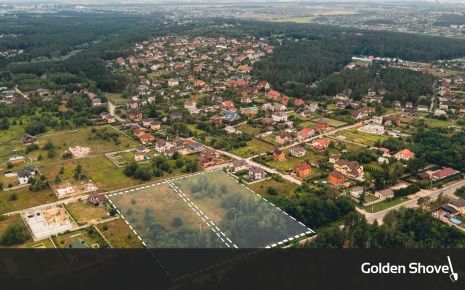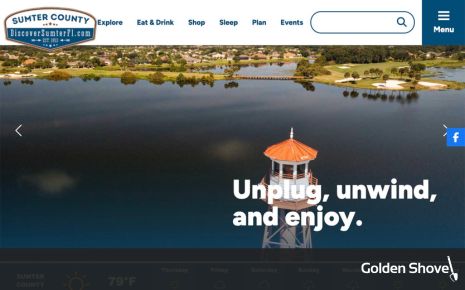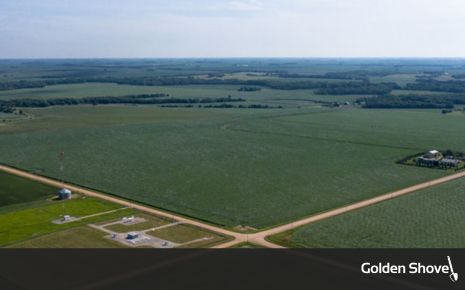Digital Marketing vs. Traditional Marketing for Rural Economic Development: What Actually Works?

17 Mar 2025
News, Marketing, Strategic Plan
The Shift Toward Digital Marketing
For years, rural economic development marketing has relied on traditional methods–brochures, trade shows, networking events, and newspaper ads. These tactics have their place, but they also come with limitations. They’re expensive, time-consuming, and often difficult to measure.
Meanwhile, digital marketing is changing how rural communities attract businesses, investment, and workforce talent. Site selectors and business leaders are no longer waiting for printed materials or trade show meetings to make decisions; they’re doing their research online.
If your community isn’t showing up in those searches, you’re already behind.
Traditional Marketing vs. Digital Marketing: A Comparison
Traditional economic development marketing typically involves:
- Trade Shows & Conferences - Valuable for networking but costly and limited to in-person engagement.
- Print Ads & Brochures - Difficult to track ROI and limited in reach.
- Word-of-Mouth & Personal Relationships - Effective, but slow and dependent on who’s in your network.
Digital marketing, on the other hand, allows rural communities to compete on a much larger scale.
- SEO-Optimized Websites - Ensure site selectors, businesses, and workforce talent can find your community anytime, anywhere.
- Social Media & Content Marketing - Allow for direct engagement with target audiences.
- Digital Advertising - Delivers highly targeted messaging to the right people at the right time.
- Performance Tracking - Helps economic developers measure results and adjust strategies quickly.
While traditional marketing still plays a role, the communities seeing the biggest wins are those that embrace digital strategies.
Why Digital Marketing is Essential for Rural Economic Development
Many rural communities have tight marketing budgets, which means every dollar needs to be spent wisely. Traditional methods like trade show booths, print advertising, and mailers often cost thousands of dollars with no guaranteed return. Digital marketing, on the other hand, provides a higher return on investment by being more cost-effective, offering greater reach, and allowing economic developers to track results in real time.
Unlock print ads or trade shows, digital marketing ensures that site selectors, business leaders, and workforce talent can find your community whenever they search online. It levels the playing field for rural areas, allowing them to compete with larger cities without requiring a massive budget. A single digital campaign can reach thousands of decision-makers, providing data on what’s working and what’s not–something traditional marketing simply can’t do.
Rural communities that embrace digital marketing aren’t just saving money; they’re attracting more businesses, investment, and workforce talent than ever before. This shift isn’t about abandoning all traditional marketing efforts but rather integrating digital strategies to create a more effective and measurable approach to economic development.
How Rural Communities Can Transition to Digital Marketing
For economic developers used to traditional outreach, the shift to digital marketing may seem overwhelming. But the process is straightforward. It starts with a strong online presence, specifically a professional economic development website. If a potential investor or workforce candidate searches for your community and finds an outdated site—or worse, nothing at all—you’re already at a disadvantage. Your website should be easy to navigate, optimized for search engines, and provide updated information on business opportunities, available sites, and workforce data.
Beyond the website, content marketing plays a critical role in keeping your community top of mind. Articles highlighting business success stories, workforce development programs, and quality-of-life benefits can position your town as a great place to invest and live. A well-maintained blog or news section on an economic development website helps drive organic traffic while reinforcing the message that your community is thriving and forward-thinking.
Social media and digital advertising amplify this visibility, ensuring the right people see your community’s story. Targeted ads on LinkedIn, Google, and industry-specific platforms can put your town in front of site selectors and business leaders who may never have considered it otherwise. Unlike traditional media buys, digital advertising allows for precise targeting and real-time adjustments to improve performance.
impactLOCAL: A Digital Marketing Solution for Rural Communities
While digital marketing is powerful, many rural economic developers face a familiar challenge: limited staff, time, and technical expertise to execute these strategies effectively. That’s where impactLOCAL comes in.
impactLOCAL provides an affordable, professionally designed economic development website that helps rural communities establish a strong digital presence. With built-in SEO tools, automatic data updates, and ongoing content support, impactLOCAL ensures that site selectors, workforce talent, and business leaders can find the information they need—without requiring a dedicated marketing team. It simplifies the transition from traditional marketing to digital outreach, helping communities maximize their visibility and engagement.
The Future of Economic Development Marketing is Digital
The shift toward digital marketing isn’t a passing trend—it’s the future of economic development. Rural communities that invest in a strong online presence, digital outreach, and search visibility are the ones securing business investment, attracting workforce talent, and remaining competitive.
If your community is still relying solely on traditional marketing, it’s time to take the next step. Let’s talk about how impactLOCAL can help modernize your economic development strategy and put your community in front of the right audience.
To explore how other rural communities are successfully using digital marketing, download our Rural America Whitepaper for real-world strategies and success stories.
More Topics





